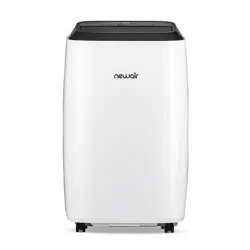Loading ...
Loading ...
Loading ...

EN
www.newair.com 28
d) purge the circuit with inert gas (optional for A2L);
e) open the circuit by cutting or brazing.
• The refrigerant charge should be recovered into the correct recovery
cylinders if venting is not allowed by local and national codes. For appliances
containing flammable refrigerants, the system should be purged with
oxygen-free nitrogen to render the appliance safe for flammable
refrigerants. This process might need to be repeated several times.
Compressed air or oxygen should not be used for purging refrigerant
systems.
• For appliances containing flammable refrigerants, refrigerant purging should
be achieved by breaking the vacuum in the system with oxygen-free nitrogen
and continuing to fill until the working pressure is achieved, then venting to
the atmosphere, and finally pulling down to a vacuum (optional for A2L).
This process should be repeated until no refrigerant remains within the
system (optional for A2L). When the final oxygen-free nitrogen charge is
used, the system should be vented down to atmospheric pressure to enable
work to take place.
• Ensure that the outlet for the vacuum pump is not close to any ignition
sources and that there is adequate ventilation.
8. CHARGING PROCEDURES
In addition to conventional charging procedures, the following requirements
should be followed:
• Ensure that contamination of different refrigerants does not occur when
using charging equipment. Hoses or lines should be as short as possible to
minimize the amount of refrigerant contained in them.
• Cylinders should be kept upright.
• Ensure that the refrigeration system is grounded prior to charging the
system with refrigerant.
• Label the system when charging is complete (if it has not already been
labeled).
• Extreme care should be taken not to overfill the refrigeration system.
• Prior to recharging the system, it should be pressure tested with OFN. The
system should be leak tested on completion of charging but prior to
commissioning. A follow up leak test should be carried out prior to leaving
the site.
Loading ...
Loading ...
Loading ...
